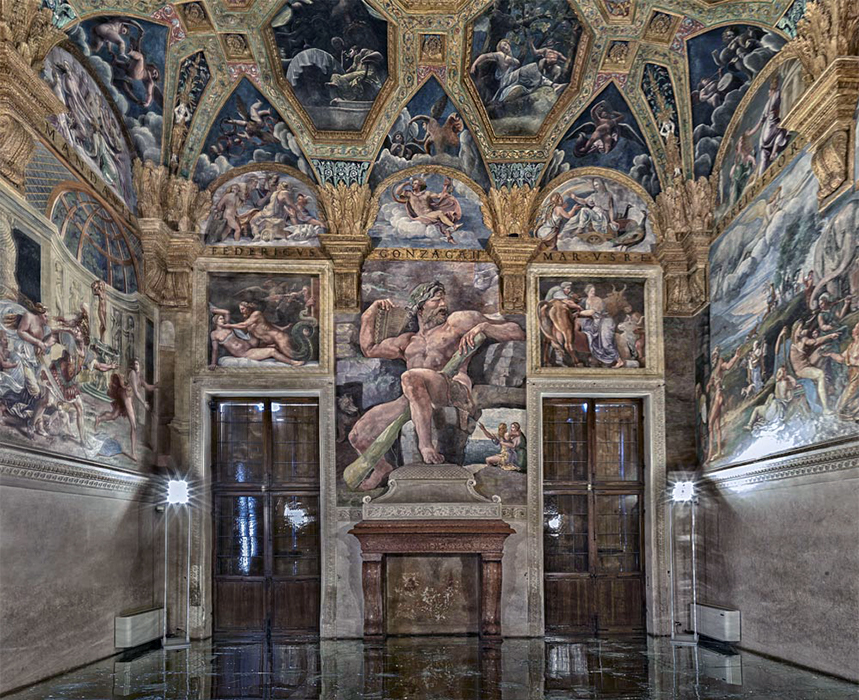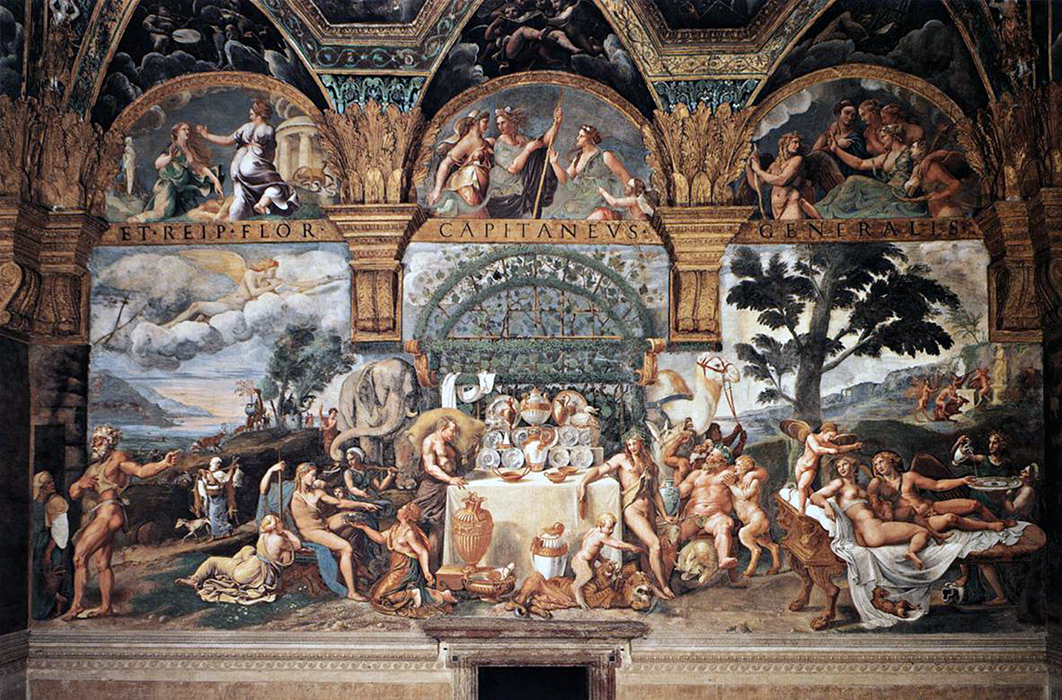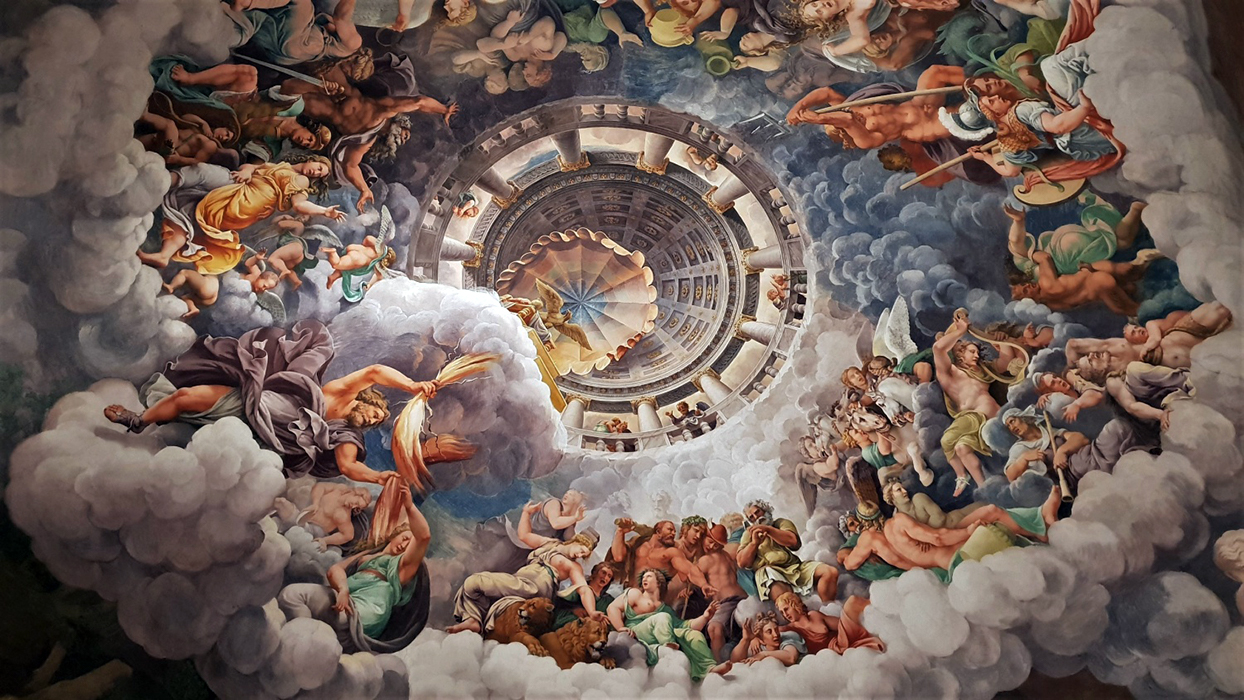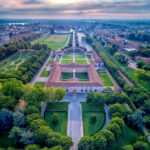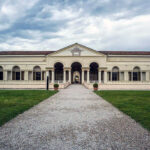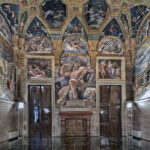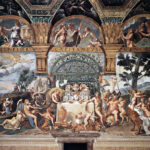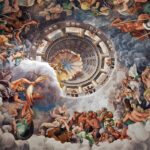Mantua – Palazzo Te
Mantua from the late twelfth to the mid-eighteenth century was an island surrounded by four lakes, the southern lake Paiolo was subsequently buried and reclaimed. Inside this lake, there was an island that from the Middle Ages was called “Tejeto” island abbreviated then in “Te”. Francesco II Gonzaga decided to use the island as a training place for his horses. His son Federico II decided to build there a country villa on the model of the Roman ones to which he had had access during the years of his youth spent as a hostage in Rome. He then summoned the painter and architect Giulio Romano, pupil and collaborator of Raphael, to Mantua, to whom he commissioned the works. Giulio Romano created a low square-shaped structure with a central garden inspired by the ancient Roman Domus. The rusticated external walls were decorated with Doric pilasters to mark the surface and separated into two registers, the lower one has rectangular windows framed by rough rustication while the upper register has small frameless windows. All surmounted by a series of metopes and triglyphs. The internal walls, while maintaining a link with the outside, present stylistic inventions that break the classic linearity. The eastern facade has a central loggia with Serlian, a motif that decorates the entire register of the facade, bordered by two fish ponds. The second register originally appeared as an uninterrupted covered loggia. In the 18th century, the upper loggia was removed and the central tympanum was added. The courtyard with the exedra that we see today was added later as well as the orangery on the southern side. Originally it was an open garden with a series of rooms in the east corner to form a small secret apartment. As well as the exterior, the interior of the building was also decorated by Giulio Romano and his workshop with fantastic inventions designed to enhance the Gonzaga figure and amaze the guests. Each room has a theme inspired by the glories of the Gonzaga family, classical mythology or the exaltation of Roman traditions. The most famous room is the Camera dei Giganti, where creating an environment without edges and creating a single frescoed scene that joins the walls with the vault illustrates the battle between the Olympian gods and the giants, alluding to the figure of Emperor Charles V who defeats the enemies of the Empire.
Inside Palazzo Te there are also some collections donated to the Civic Museum of Mantua including a small collection of Egyptian antiquities and another of Mesopotamian antiquities.



